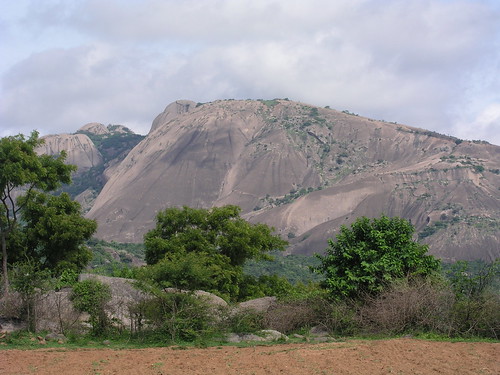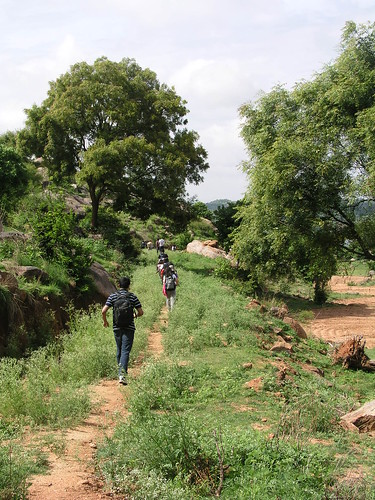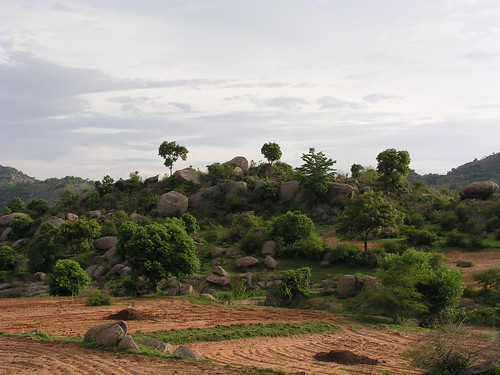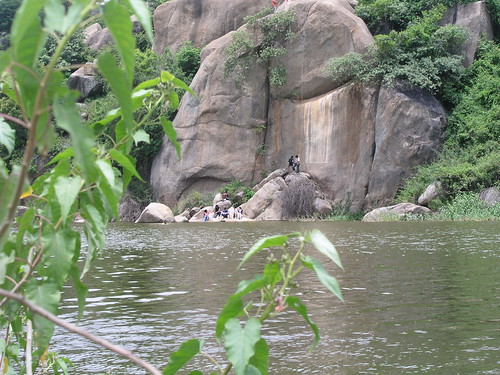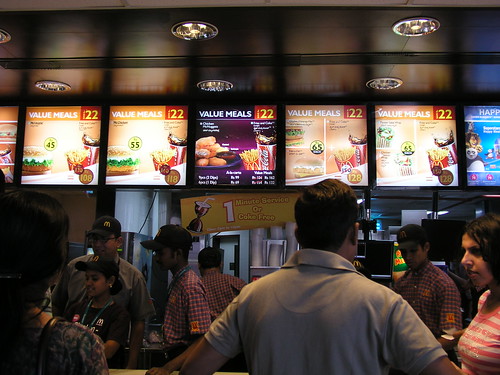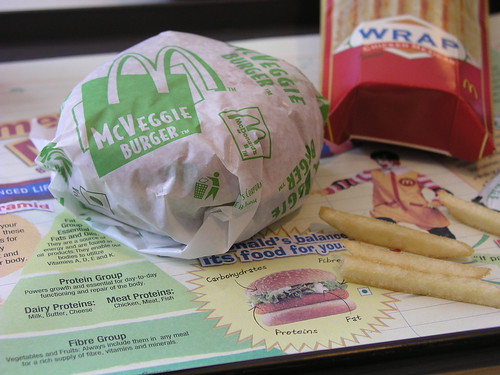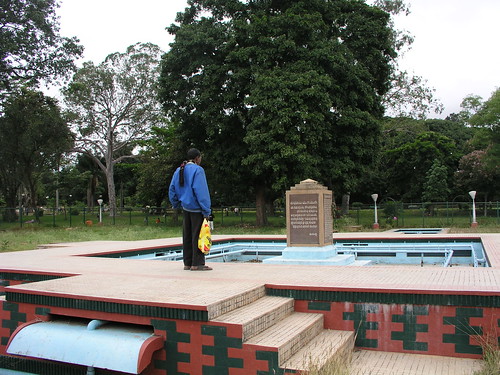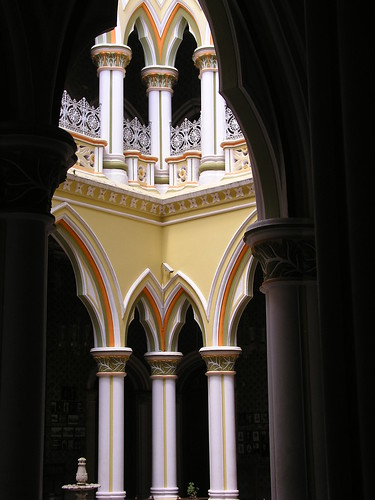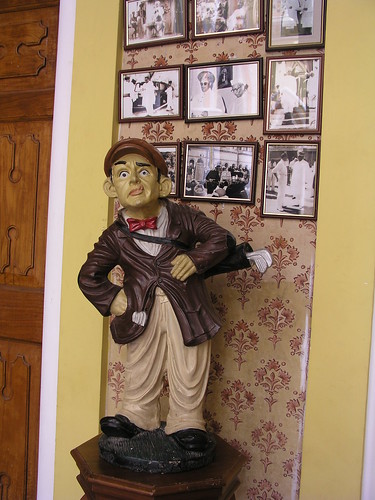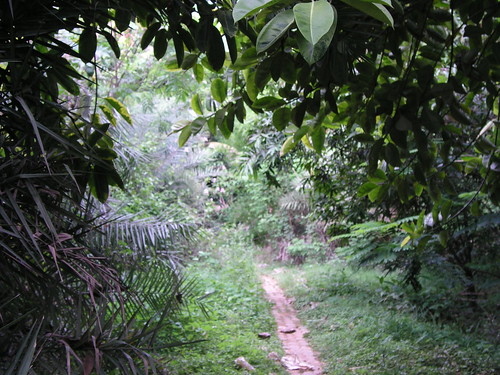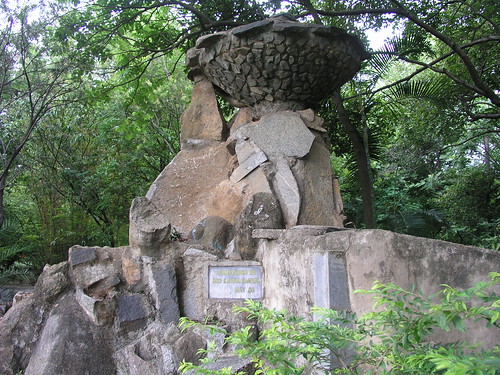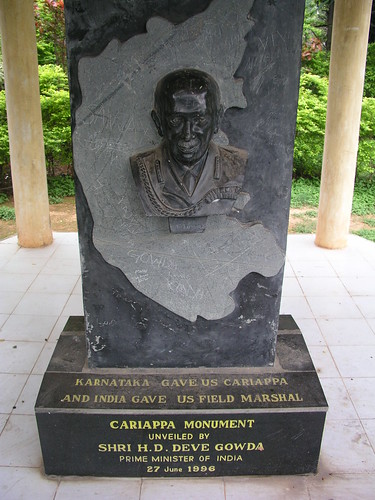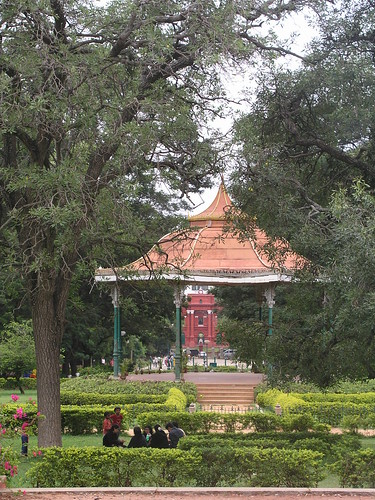
Anyway, in a weird twist of fate, the very next morning after Venu pointed out the track to me on the bus, the newspaper's headline story was all about the racetrack losing its lease and needing to relocate at the end of the season.
Now, this was not a running-out-of-money issue. This was a city-grabbing-land issue. That is, the city of Bangalore owns the land where the racetrack sits and the city now wants to do something different with that land, like put up a big building, so the track was notified that the lease would not be renewed. The city proposed to give the Bangalore Turf Club about 100 acres in Chikkajala outside of Bangalore and while rebuilding, the racing dates for the next few years could move to the racetrack in Mysore. But the Mysore racing community argued that their track was too small to house all of the horses that run in Bangalore.
Clearly, this was a sign that I should spend the day at the races. I decided to go straight there, all by myself. An uncomplicated rickshaw ride put me right outside the gates. There were two entrances, one for members and one for the general public. The general public entrance looked pretty seedy from the outside so I pretended I had not seen the signs and tried going in the members entrance (you have to pay admission there, too.) Nothing doing. The ticketseller waved me back to the general entrance.
The entrance fee was small, 10 Rs maybe. Once I was inside though, I began to think that going alone was not such a great idea. It probably would have been much smarter to ask around the office and get a group together or get some tips on how to get in on the members side (I'm sure the big hotels must be able to make arrangements for any guests who are interested.)
Like any racetrack, the finish line was at the members section. The members section was also the place where the horses entered the track and the place where they located the starting gates. It had better seating too. The members stands were much higher and positioned at an angle so one could really see the horses as they rounded the turn and came down the stretch.
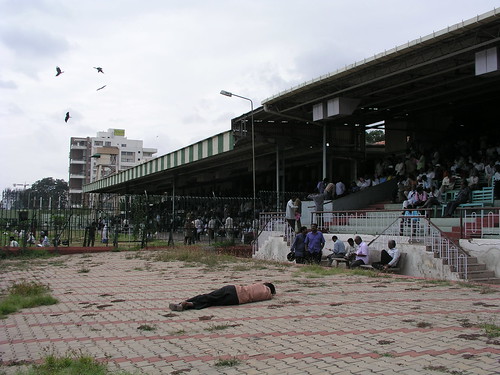
The general admission stands were low bleachers that faced straight ahead so you only got about 5 seconds of horseflesh pounding past per race. Instead of sitting there, I walked down to an open area between the bleachers and track and watched the action through the fence. Of course, you could always go back behind the stands where the betting windows and food vendors were located and watch the races on closed-circuit television. But that is not my idea of a day at the track. Plus, the ratio of women to men in general admission was something like about 0%, me and I think one other lady. And none of these men looked liked they had a desk job to go to on Monday. Yes, it would have been better to go with friends.
It was interesting to see how things were done. In Chicago, there are several racetracks and they all have automated results boards and groom the track between races with machinery. In Bangalore, it's more important to employ people. The odds and results are posted by hand and men with brooms and rakes tidy up the track.

Because space is limited, the center of the track appears green but it is not some vacant piece of landscaping with duck ponds, ornamental trees and flower beds suggesting a gracious mansion in the country. The center of the Bangalore track is actually a warren of stables below track-level so when you look out to the backstretch, you are looking across stable roofs. This causes the horses to go out of sight when they reach the far end of the backstretch and they stay out of sight (from the general stands) until they turn the corner into the home stretch.
I didn't bet, figuring that could be a translator's nightmare. But I mentally picked a horse to show (come in third or better) as they paraded past and each one that I picked would have paid out. Ahhh, good to know I can still pick horses.
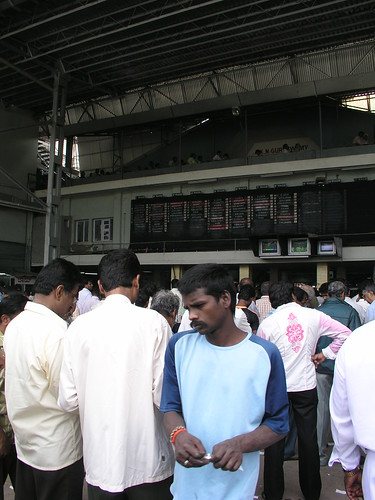
After a few races, I was ready to move on to another adventure. I knew the track was near the big bus terminal, Kempegowda, and I wanted to figure out how that worked. It was on my mind that I could use buses to get around, especially to Bannerghatta National Park.
I could have walked but got a rickshaw ride for 15 Rs, no shopping, and that was fine. There is nothing like this bus station in Chicago. We have a few places where buses connect to a train or subway terminal but even those places only have about six or seven berths for buses and only about that many buses are ever in the station at one time. Kampegowda, on the other hand, seemed to have a hundred buses coming and going at once. It was bedlam.
There are actually about three bus stations or bus lines laid out parallel to one another. An elevated ramp leads to many islands for the city-wide BMTC buses; it was off to my right. To my left, rickety, worn-out buses without any English markings were coming in from the suburbs and villages around Bangalore. Beyond those lanes, through a low building were the state-run KSRTC buses.
Everybody appeared to know where to catch their bus and they were going there pretty fast. That was a surprise since information like timings, prices, and where to find the bus you wanted didn't seem to exist. I walked around the whole place twice to figure it out. Passing under the ramp, near what might have been a ticket vending office, I found a large map of the Bangalore system on a wall. I could see that buses numbered in the 330 range ran parallel to MG Road and then out along Airport Road, and I noted down a few other useful routes and numbers, too. Now I knew how to use the bus to get downtown and back.

I found a brown 333 bus, told the driver I was going to the Domlur stop (another passenger re-translated) and he charged me 10 Rs. When the bus got close to my stop, about three passengers let me know. It was so very nice.
Later, looking for a photo of the bus station, I discovered that it used to be a lake. I also discovered that I could never successfully access that transit map on the BMTC site.
At the moment, a Supreme Court court decision has revoked Bangalore's right to give up the land in Chikkajala and the Bangalore Turf Club has no alternative land to rebuild. Click here for details.
Then click here to learn more about the racetrack's history, get the current schedule, and see more pictures.
